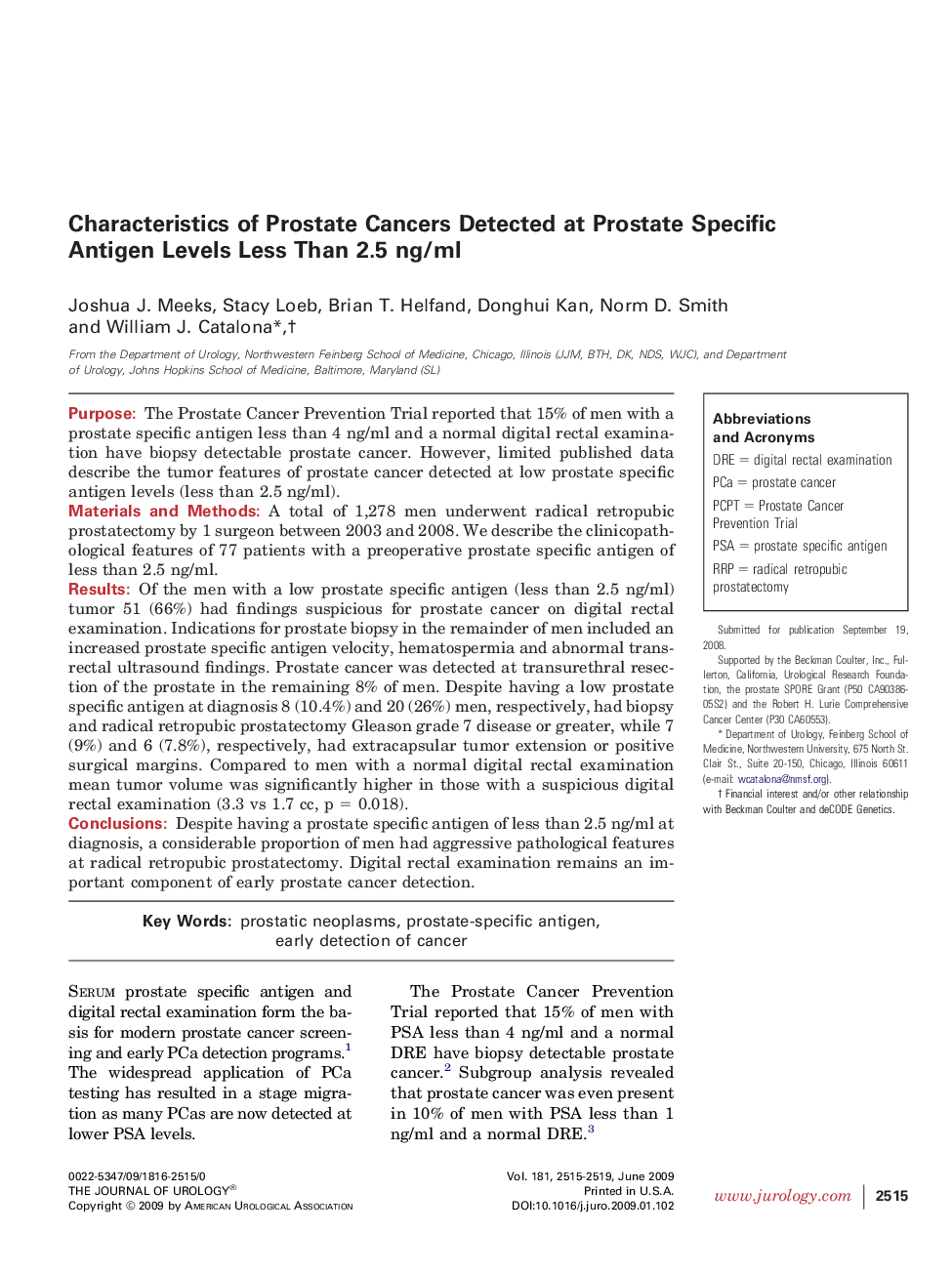| Article ID | Journal | Published Year | Pages | File Type |
|---|---|---|---|---|
| 3871514 | The Journal of Urology | 2009 | 5 Pages |
PurposeThe Prostate Cancer Prevention Trial reported that 15% of men with a prostate specific antigen less than 4 ng/ml and a normal digital rectal examination have biopsy detectable prostate cancer. However, limited published data describe the tumor features of prostate cancer detected at low prostate specific antigen levels (less than 2.5 ng/ml).Materials and MethodsA total of 1,278 men underwent radical retropubic prostatectomy by 1 surgeon between 2003 and 2008. We describe the clinicopathological features of 77 patients with a preoperative prostate specific antigen of less than 2.5 ng/ml.ResultsOf the men with a low prostate specific antigen (less than 2.5 ng/ml) tumor 51 (66%) had findings suspicious for prostate cancer on digital rectal examination. Indications for prostate biopsy in the remainder of men included an increased prostate specific antigen velocity, hematospermia and abnormal transrectal ultrasound findings. Prostate cancer was detected at transurethral resection of the prostate in the remaining 8% of men. Despite having a low prostate specific antigen at diagnosis 8 (10.4%) and 20 (26%) men, respectively, had biopsy and radical retropubic prostatectomy Gleason grade 7 disease or greater, while 7 (9%) and 6 (7.8%), respectively, had extracapsular tumor extension or positive surgical margins. Compared to men with a normal digital rectal examination mean tumor volume was significantly higher in those with a suspicious digital rectal examination (3.3 vs 1.7 cc, p = 0.018).ConclusionsDespite having a prostate specific antigen of less than 2.5 ng/ml at diagnosis, a considerable proportion of men had aggressive pathological features at radical retropubic prostatectomy. Digital rectal examination remains an important component of early prostate cancer detection.
